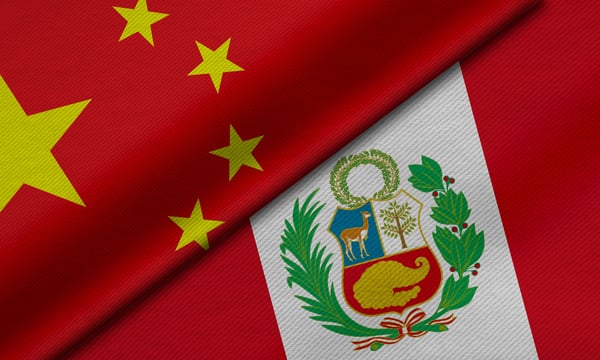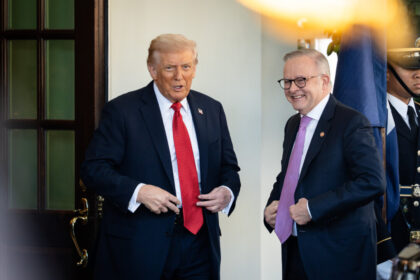While there has been plenty of analysis devoted to China’s development of the Chancay port in Peru, an angle that has been too often overlooked is China’s tactical use of cultural engagement to facilitate this achievement. Leading up to and in parallel with Chancay’s opening, Beijing conducted multiple targeted campaigns to spotlight historical and civilizational parallels between China and Peru.
Beijing’s influence in the South American country is not only about investment, but also crucially about shaping public perceptions and narratives over time, especially in an arena often overlooked by Western powers. This technique is part of a broader pattern wherein the Chinese Communist Party (CCP) uses cultural diplomacy as a key node in its strategy to promote global infrastructure projects especially as part of the Belt and Road Initiative (BRI).
The eventual success of the Chancay port project was a result of Beijing’s signature style of long-term planning. Chinese companies started to engage with Peru as early as 2013, donating money to local governments for schools, hospitals, and other public facilities. Initiatives like the China-Latin America Cultural Exchange Year, as well as 180 sister-city partnerships, have further contributed to boosting ties between China and the region, demonstrating the pivotal role subnational governments play in linking Latin America to China.
2016 marked the 45th anniversary of the establishment of diplomatic relations between China and Peru, and Xi made a visit to Peru to attend the Leaders’ Summit of the Asia-Pacific Economic Cooperation (APEC) – a 21-member forum representing around 60 percent of global GDP. As part of this celebration, Beijing arranged an exhibit presenting Chinese treasures at the National Museum of Archaeology, Anthropology, and History of Peru in Lima. The Chinese president and his wife, along with their Peruvian counterparts, attended the exhibit entitled “River of Civilization – Mutual Learning between China and Peru.” Xi himself acted as a tour guide to the Peruvian contingent, including the head of the museum. The museum director later reported that frequent cultural exchanges have increased Peruvians’ understanding of their shared culture and history with China in a manner that transcends political and economic bonds alone.
Seemingly small gestures such as an intimate tour with Xi, contrasted with the comparative Western, especially American, absence, can have real impact on how local populations receive and view Chinese engagement in their country. Exercises such as these museum partnerships all form part of the CCP’s effort to make Chinese engagement in a country more palatable to the wider population, by overtly elevating the country in question to a role of importance. In this case, the Chinese narrative cites the Incan empire to designate Peru as the heart of American civilization.
Last October, a special exhibition of China Media Group’s “Journey Through Civilizations: An Encounter with Liangzhu” 2024 World Tour opened in Lima, showcasing China’s history as a “5,000-year-old civilization,” a narrative element that the CCP frequently employs to project its power, image, and the inevitability of its rise on the world stage. Teachers and students from the Confucius Institute at Ricardo Palma University reported that they learned about how similar the Chinese artifacts are to those of the Inca.
A joint exhibit also opened at the Museo Inka in Cusco, a tourist hotspot that acts as the base from which travelers reach the famous Machu Picchu. This exhibit, entitled “Light of the Sun: A Dialogue Between Ancient Shu and Inca Civilizations,” houses an array of 3D-printed replicas of artifacts from the ancient Shu civilization of southwest China (present-day Chengdu).
When Peruvian President Dina Boluarte made a visit to China last year, her first stop was the Nanshan Museum in Shenzhen. She visited an exhibit of Peruvian relics on display there, revealing that these museum exchanges are bidirectional and can work to develop influence from multiple angles. The museum’s director remarked that he understood and appreciated the Peruvian president’s admiration for such cultural collaborations. Again, simple efforts such as these that illustrate real engagement and commitment to relations with Peru bring large benefits and develop a sense of trust that China can then build upon.
During the trip, Boluarte met with Chinese businesses and potential investors, including leaders from BYD, Huawei, COSCO, and China Southern Power Grid, the latter two of which now control the Chancay port and half of Lima’s electricity respectively. The Biden White House, on the other hand, failed to invite Boluarte for a meeting when she visited Washington in 2023.
Discourse in Chinese state media has explicitly linked a civilizational brotherhood between ancient China and the Inca to the port in Chancay. One CGTN video entitled “Inca Culture Meets Modernity: The Peru-China Story” stated, “Peruvians have valued the ocean and sailing since ancient times. For example, Chancay Port is a landmark project under the BRI…” That same video then shows artifacts from Chancay itself. The Maritime Silk Road is emphasized as the BRI’s precursor and then connected to Peru and the grandeur of the Inca.
Chinese state media also highlight the fact that Peru hosts one of the largest ethnic Chinese communities in the region. The idea is to ground the current cooperation between the two countries in history, thus painting it as a logical continuation of a longstanding tradition. This concept is encapsulated succinctly with the phrase which China uses to refer to Peru: “Pacific neighbor.”
While all of these connections may seem somewhat tangential to the development of the actual port, the fact that Xi himself employed such language at its inauguration event underscores the importance of this framing as a core tenet of the CCP’s overall strategy to cultivate influence, relationships, and infrastructure projects in a given host country. Even back during his visit in 2016, Xi referred to Peru as China’s “neighbor” across the Pacific, highlighting the Andean nation’s role as home to one of the world’s great ancient civilizations, the Inca. Eight years later, Xi built further upon this rhetoric at the inauguration of the Chancay port, directly associating the Inca Trail – a 15th century mountain network that connected the Inca empire – with the 21st Century Maritime Silk Road. The fact that Xi personally attended the port’s inauguration – though he only virtually visited Chancay itself, citing security concerns – demonstrates how seriously he took the event, and again shows a commitment to Peru that is not always mirrored by Western heads of state.
The port in Chancay marked a massive triumph for China in Latin America and the Global South more widely. The timing of the port’s inauguration to coincide with the APEC summit, particularly contrasted with the image of a relatively absent U.S. President Joe Biden – who only went to Latin America twice during his time in office. The message conveyed is that China delivers tangible results, while the US takes Latin America for granted.
Fearmongering from Washington – especially without the offer of an alternative – is therefore viewed as out of touch and condescending. Alarm bells regarding dual use infrastructure, for example, may be heard as patronizing, paternalistic attempts from an embittered United States to dictate to other countries how they should conduct their own affairs, further reinforcing China’s narrative that the U.S. is a neocolonialist power trying to control Global South countries.
A quote from the Global Times regarding the Peruvian president’s trip to China captured this sentiment, saying that Boluarte’s visit “reflects that the country has stood firm despite the U.S. pressure, underscoring the continuous enhancement of strategic autonomy of the Latin American countries.” In response to American complaints, Peru’s Foreign Minister Javier González-Olaechea himself said that the United States, too, can invest in the country and that, in fact, everyone is welcome to do so.
The second Trump administration appears to recognize Latin America’s strategic importance, at least compared to recent previous U.S. governments, with Secretary of State Marco Rubio visiting Panama, El Salvador, Costa Rica, Guatemala, and the Dominican Republic on his first diplomatic tour – the first time in years that Washington has prioritized its own neighborhood in such a manner. Trump’s approach to the region, however, is characterized by strongarm tactics, exemplified by threats to seize the Panama Canal as well as recent U.S. naval deployments intended to intimidate Venezuela.
This aggressive attitude makes the juxtaposition with Beijing’s patient cultivation of cultural ties and economic collaborations even starker. China’s interest in Latin America stems from its desire to boost its standing in the Global South, to flex its muscles as a geopolitical power in the United States’ backyard and traditional sphere of influence, and of course to access the region’s wealth of natural resources. Yet its methods are much subtler; partnership is sold as a mutually beneficial deal between equals, and shaped by cultural messaging that highlights a shared past, present, and future.
As Beijing maintains its presence in the Western Hemisphere, it will continue to apply the same formula, a major component of which includes efforts to foster goodwill and paint a picture of common identity. China will therefore build on the momentum from successes like Chancay to continue gaining ground in Latin America and beyond.






